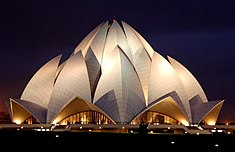Intel + India’s BSNL = 100m WiMaxers
Posted by Sam Churchill on September 2nd, 2008India is the most promising major market for WiMAX and Intel is taking steps to ensure India’s potential is realized, says industry analyst Caroline Gabriel, today.
BSNL, the 7th largest telecom company in world, is a state-owned incumbent. It is the first and largest operator in India. After India’s telecommunication policy was revised to allow private operators, companies such as Bharti Telecom, Tata Indicom, Vodafone, MTNL, BPL and others have entered the space.
Intel’s new alliance with BSNL - a significant supporter of WiMAX - puts this relationship in a different league, in the view of Gabriel:
The partnership with BSNL will see Intel, and reportedly Cisco, putting a framework in place that should enable BSNL to accelerate its roll-out, with a far higher likelihood of commercial and operational success, despite the economic and geographical complexities of the Indian territory.
Intel is to review BSNL’s deployment roadmap, which has started with fixed access services in 3.3GHz, but will expand to embrace mobile, nomadic and hotzone systems too, in 2.5GHz and 2.3GHz.
It will help develop basic standards to underpin the roll-out and its applications, regardless of technology supplier, region or frequency band. That should reduce fragmentation in 2G and 3G - and provide a measure of future-proofing for BSNL as well as attract developers of software and content.
The agreement will also help BSNL create soft interfaces for interoperability between Wi-Fi, WiMAX and the IP backbone while supporting interconnection with other Indian carriers working with Intel.
While the business cases for India’s rapidly growing and hi-tech urban centers are not hard to make, the need for broadband is vital in its rural areas, which are inevitably harder to justify commercially. Thus the Intel partnership will focus mainly on issues such as spectral efficiency and low cost of build-out/service delivery, that are crucial to rural systems.
Intel and BSNL will also establish a proof of concept laboratory to study wireless broadband technologies including new CPE formats suited to India’s markets.
By 2012, the government hopes to link 500m citizens to the internet via more than 100m broadband connections and devices, the bulk of them wireless.
Later this year, the Indian Department of Telecommunications is to make 40MHz in the 2.3GHz band and 40MHz in the 2.5GHz band available for broadband wireless, most likely WiMAX. In the 2.5GHz band, 20MHz has already been set aside for state operators BSNL and MTNL. The remaining 60MHz in total is to be auctioned to three or more operators. 3G operators will be allowed to bid for one pair of 5MHz channels - 5MHz in the 1920-1980MHz frequency band and 5MHz at 2110-2170MHz.
Following the auctions, the potential for WiMAX operators to offer a full range of services will be greatly boosted if India’s Department of Telecommunications (DoT) succeeds in its proposals that WiMAX licenses will carry VoIP as well as data rights.
“The WiMAX lobby had argued that reserve price should be lower to enable them to make broadband services affordable. If they are allowed to offer voice services also they should be treated at par with existing mobile operators bidding for 3G spectrum,” a GSM industry representative told local newspapers.
Meanwhile, state-owned BSNL has become the first Indian cellco to launch 3G services, unveiling a 2Mbps free pilot service to 2,000 postpaid subscribers in the city of Pune.
BSNL will soon invite bids for WiMax equipment to cover urban areas in Punjab and Kerala. According to Unstrung, the project may be valued between $200 million and $500 million. This is the second tender issued by BSNL, which plans to spend $750 million on mobile WiMax to reach one sixth of India’s 1 billion-plus population.
 As the largest of the country’s two state-owned operators, BSNL is guaranteed to get a broadband wireless license for 20 MHz of spectrum at 2.5 GHz in each of India’s circles, except for Mumbai and Delhi (right), where fellow state-owned operator Mahanagar Telephone Nigam Ltd. (MTNL) will be awarded 2.5 GHz licenses, explains Unstrung.
As the largest of the country’s two state-owned operators, BSNL is guaranteed to get a broadband wireless license for 20 MHz of spectrum at 2.5 GHz in each of India’s circles, except for Mumbai and Delhi (right), where fellow state-owned operator Mahanagar Telephone Nigam Ltd. (MTNL) will be awarded 2.5 GHz licenses, explains Unstrung.
According to the Telecom Regulatory Authority of India (TRAI), the country, which has a population of more than 1.1 billion, had 272.88 million telephone connections at the end of 2007, of which 233.63 million were mobile and 39.25 million were fixed line.
source : dailywirless.org



No comments:
Post a Comment